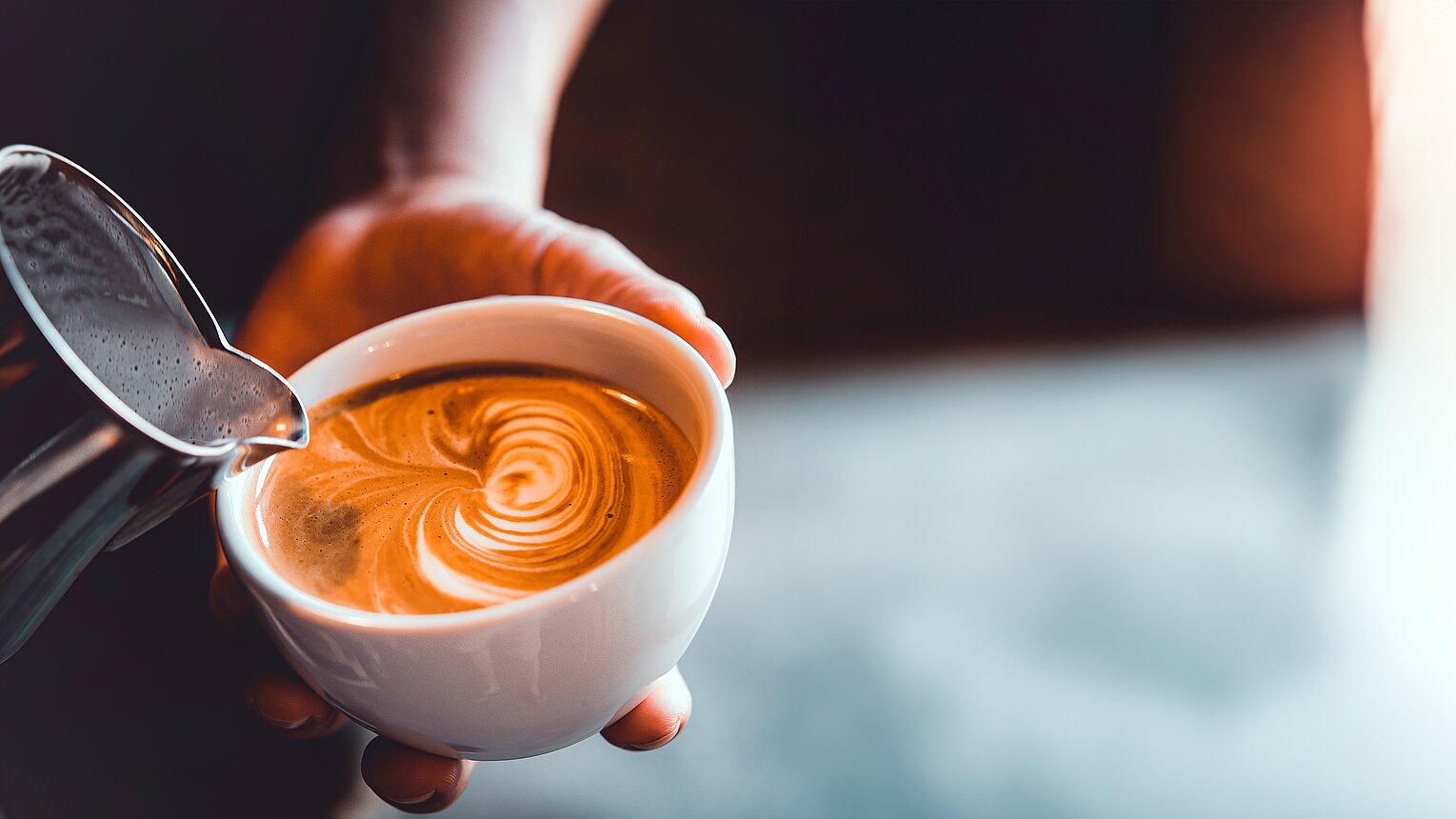The world of coffee continues to evolve at an exciting pace, with consumers becoming more adventurous and demanding in their preferences. Coffee is no longer just a morning ritual; it has become a canvas for innovation, experimentation, and personal expression. From the classic hot coffee to the increasingly popular iced varieties and indulgent lattes, today’s coffee culture is diverse, and the flavors reflect that shift. As businesses in the food and beverage industry, keeping a pulse on these evolving trends is critical to stay ahead of the curve and meet the expectations of increasingly discerning consumers.
 Hot Coffee: Tradition Reimagined
Hot Coffee: Tradition Reimagined
While hot coffee remains a staple, its role is changing. More consumers are seeking coffee that doesn’t just provide a caffeine fix but also offers a richer, more sensory experience. The desire for something new and exciting has led to the rise of flavors that enhance the coffee-drinking moment in unexpected ways. Nut-based flavors such as hazelnut, almond, and pistachio are on the rise, blending a smooth sweetness with the natural richness of coffee beans. These flavors, combined with an increasing focus on artisanal beans, are turning simple hot coffee into a gourmet experience.
Alongside nutty flavors, herbal and floral notes are beginning to make their mark. Lavender, rose, and even rosemary-infused coffees are adding an aromatic depth to each cup, offering something calming and sophisticated to those looking for more than just a caffeine jolt. This trend appeals particularly to younger consumers, who are drawn to the relaxing properties of these herbal infusions, as well as the unique flavor profiles they bring.
Spiced coffee is another area gaining traction, driven in part by the health and wellness movement. Spices like cinnamon, cardamom, and turmeric are being used to give coffee a warming, comforting feel while also offering the perception of added health benefits. The focus on wellness is becoming an integral part of how many consumers approach coffee, and spiced coffee provides a natural, holistic option that speaks to this desire.
Meanwhile, single-origin and specialty beans continue to gain popularity as coffee drinkers, particularly millennials, become more knowledgeable about the journey from bean to cup. The flavors of these specialty coffees – from bright citrus notes to deep chocolate undertones – are now being highlighted by cafes and brands eager to cater to a more educated consumer base. The demand for transparency in sourcing and ethical practices in production is also becoming a significant factor, with many younger consumers willing to spend more on coffee that aligns with their values.
Related: How’ve You Bean? Current Commercial Coffee Trends
Lattes: The Intersection of Health and Indulgence
Lattes have long been a favorite due to their versatility, and 2024 sees them taking center stage once again – this time with a stronger emphasis on customization and health. Younger coffee lovers, particularly Gen-Z, are driving the demand for plant-based milk alternatives like oat, almond, and coconut milk. These consumers are more mindful of the environmental impact of their choices and are gravitating toward non-dairy options that align with their values of sustainability.
Oat milk has emerged as the star among these alternatives, providing a creamy consistency that pairs well with espresso while maintaining a subtle flavor. This shift toward plant-based ingredients reflects a broader health-conscious approach that is influencing how lattes are crafted and consumed.
But the innovation doesn’t stop with milk choices. Functional ingredients are finding their way into lattes, as more consumers look for beverages that offer more than just good taste. Matcha lattes have made their way into mainstream coffee culture, loved for their vibrant green color and perceived health benefits, such as boosting energy without the jitters. Other wellness-oriented ingredients, like turmeric and mushroom powders, are being added to lattes for their anti-inflammatory properties and ability to support cognitive function. These ‘functional lattes’ are particularly appealing to consumers who want their coffee to serve a dual purpose: as a treat and a tool for enhancing overall wellness.
Flavored lattes remain popular, especially with millennials who are always on the lookout for new and exciting taste experiences. Syrups and sauces like lavender, salted caramel, and seasonal favorites such as pumpkin spice are now the norm at many coffee shops. However, there’s a growing emphasis on using natural sweeteners and ingredients, reflecting a desire for indulgence without the guilt. The ability to customize these drinks, tailoring sweetness levels or flavor combinations, is a key driver for repeat purchases.
Subscribe to In-sight to receive articles and reports directly to your inbox, CLICK HERE!
 Iced Coffees and Cold Brews: A Cool Revolution
Iced Coffees and Cold Brews: A Cool Revolution
Iced coffee has firmly established itself as a year-round favorite, transcending its summer association. Cold brew, in particular, has gained a loyal following for its smooth, less acidic flavor and its reputation as a ‘better’ coffee for those seeking something rich without the harshness of a typical iced coffee. Meanwhile, nitro coffee, with its creamy texture and cascading visual appeal, is capturing the imaginations of coffee lovers who want a little more drama in their drinks.
Cold brew is also branching out into new flavor territories. Fruit infusions, such as orange or lemon zest, and floral notes like hibiscus and lavender are transforming cold brew into a lighter, more refreshing beverage. These flavors appeal particularly to Gen-Z, who are drawn to novelty and aren’t afraid to mix unexpected flavor profiles.
The love for iced coffee doesn’t stop at subtle, natural flavors. Younger consumers are experimenting with bolder combinations, embracing sweet and savory pairings. Salted caramel, honey and sea salt, and even chili-infused iced coffees are making waves, especially among those looking to shake up their coffee routine. Iced coffee, in this sense, is becoming an outlet for creativity – a reflection of the playful, adventurous spirit of younger coffee drinkers.
At the same time, health-conscious consumers are asking for low-sugar or zero-sugar iced coffees, pushing brands to introduce beverages that satisfy both flavor and dietary requirements. Natural sweeteners like stevia and monk fruit are becoming popular options, as they provide sweetness without compromising health goals.
 The Impact of Sustainability on Coffee Trends
The Impact of Sustainability on Coffee Trends
Sustainability has moved beyond being a trend to become a core expectation of coffee consumers, especially those in the younger demographic. Gen-Z and millennials are paying more attention to the environmental and social impact of their purchasing decisions, particularly in the coffee space. As a result, coffee companies are increasingly being called upon to prove their sustainability credentials.
Ethical sourcing is no longer optional. Consumers are looking for brands that support fair trade practices, invest in direct trade relationships with coffee farmers, and promote transparency in their supply chains. Sustainable packaging solutions, such as compostable cups and recyclable containers, are also gaining importance, especially as environmental consciousness continues to grow.
For businesses in the food and beverage industry, responding to these sustainability demands is essential. Not only do ethical practices attract younger, values-driven consumers, but they also provide an opportunity to differentiate in an increasingly crowded market. Transparency about sourcing, partnerships with environmentally responsible suppliers, and a commitment to reducing carbon footprints are all factors that today’s coffee drinkers take into account when choosing their preferred brand or café.
As coffee culture continues to evolve, the trends shaping the market in 2024 reflect broader consumer desires for customization, health, and sustainability. Hot coffee is no longer just about the roast – it’s about how flavors can elevate the experience. Lattes have transformed from indulgent treats into wellness drinks, with plant-based options and functional ingredients driving their popularity. Meanwhile, iced coffee has become a canvas for bold experimentation, with cold brews, nitros, and infused flavors leading the way.
For businesses in the food and beverage industry, understanding and adapting to these shifts is crucial. Coffee consumers are looking for something more – a drink that resonates with their values, suits their lifestyle, and delivers on flavor. By staying ahead of these trends and meeting consumers where they are, companies can position themselves at the forefront of the coffee revolution, offering products that not only taste great but align with the evolving demands of the modern coffee drinker.
Want to learn more about our trends and insights? Get in touch with our team at Symrise today, Contact us here!





